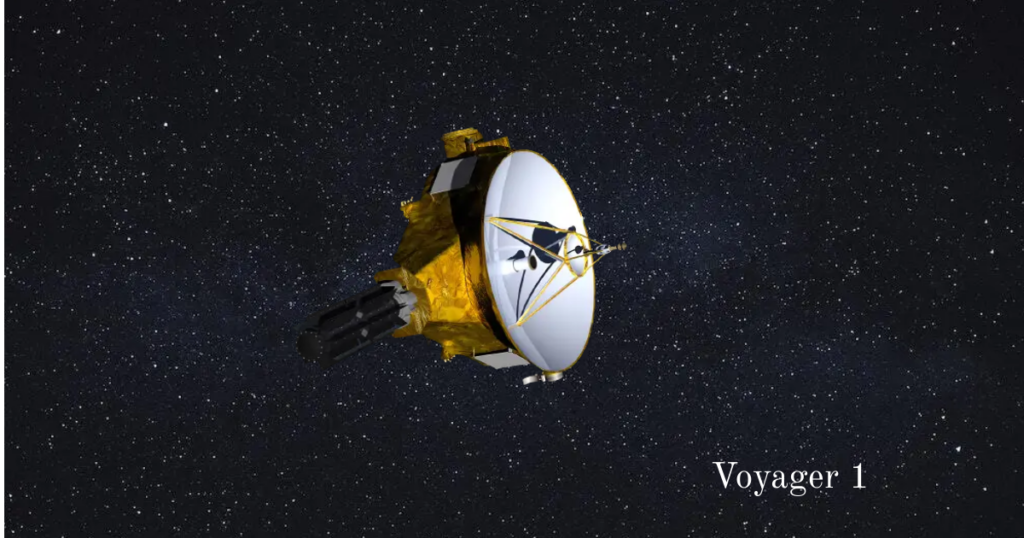The Extraordinary Journey of the Voyager 1
Do you know the manmade object that holds the record for traveling the highest distance in the universe? Explore the awe-inspiring journey of Voyager 1 as it ventures beyond our solar system and into the depths of interstellar space.
In the vast expanse of the universe, there is a small and unassuming spacecraft that has achieved something truly remarkable. Its name is Voyager 1, and it holds the record for being the manmade object that has traveled the highest distance in the universe. Embarking on its journey more than four decades ago, Voyager 1 has become a testament to human ingenuity and a symbol of our insatiable curiosity about the cosmos. Let’s delve into the extraordinary voyage of this remarkable spacecraft and uncover the secrets it has unveiled along the way.
The Launch of Voyager 1: A Bold Mission to the Outer Reaches of the Solar System
On September 5, 1977, NASA launched Voyager 1 from Cape Canaveral, Florida, with the aim of studying the outer planets of our solar system. Its sister spacecraft, Voyager 2, was launched just a few weeks earlier. Equipped with a range of scientific instruments and a golden record containing sounds and images representing Earth, Voyager 1 embarked on a mission that would eventually take it far beyond the boundaries of our solar system.
Discovering the Secrets of the Outer Planets: Jupiter and Saturn
Voyager 1’s first destination was the largest planet in our solar system: Jupiter. As it approached the gas giant, the spacecraft captured breathtaking images of the intricate cloud patterns on Jupiter’s surface and its iconic Great Red Spot. It also made significant discoveries about Jupiter’s moons, including Io, Europa, Ganymede, and Callisto, revealing their complex geological features and providing insights into the potential for extraterrestrial life.
After completing its flyby of Jupiter, Voyager 1 set its sights on Saturn. The spacecraft revealed stunning details of Saturn’s rings, capturing images that showcased their intricate structure and dynamics. It also discovered new moons around Saturn and provided valuable data about the planet’s atmosphere and magnetic field. The insights gained from these encounters with Jupiter and Saturn laid the foundation for future space exploration missions.
The Grand Tour: Venturing Beyond the Outer Planets
Having accomplished its primary mission, Voyager 1 was ready to embark on an unprecedented journey known as the “Grand Tour.” This trajectory would allow the spacecraft to explore the outer reaches of our solar system by using the gravity assists of Jupiter and Saturn to gain the necessary speed for its interstellar voyage.
Crossing the Heliopause: Voyager 1’s Entry into Interstellar Space
After more than three decades of traveling through the depths of space, Voyager 1 reached a significant milestone on August 25, 2012. It crossed the heliopause, the boundary between the region influenced by our Sun and the vast interstellar space beyond. This remarkable achievement marked the first time a human-made object had ventured into the realm between the stars.
As Voyager 1 made its way into interstellar space, it continued to transmit valuable data back to Earth, providing scientists with insights into the conditions and characteristics of this unexplored territory. The spacecraft’s instruments detected a marked increase in cosmic rays, confirming its entry into the new frontier. It also revealed surprising information about the magnetic field of interstellar space, challenging existing theories and deepening our understanding of the universe.
The Ongoing Journey: Voyager 1’s Encounters in Interstellar Space
Even after crossing into interstellar space, Voyager 1 remained an active scientific explorer. Despite its vast distance from Earth, the spacecraft continued to communicate with mission control, sending back data that continues to shape our understanding of the universe.
Voyager 1’s instruments detected the presence of a mysterious region called the “magnetic highway,” where particles from our Sun interact with those from interstellar space. This discovery shed light on the complex interactions occurring at the boundaries of different space environments.
Moreover, Voyager 1 is now on a trajectory that will carry it close to another star system. In approximately 40,000 years, it will pass within 1.7 light-years of a star named AC +79 3888. Although it will be billions of years before Voyager 1 reaches another star system, this future encounter symbolizes the enduring legacy of human exploration and the limitless possibilities that lie ahead.
Conclusion:
The journey of Voyager 1 stands as a testament to human curiosity and the relentless pursuit of knowledge. From its explorations of the outer planets to its venture into the depths of interstellar space, this small spacecraft has pushed the boundaries of our understanding and revealed the wonders that lie beyond our solar system.
As Voyager 1 continues its eternal voyage through the cosmos, it serves as a reminder of our capacity to explore, discover, and dream. It is a symbol of our innate desire to unravel the mysteries of the universe and to seek answers to the profound question: “Do you know the manmade object which traveled the highest distance in the universe?”
FAQs:
Do you know the manmade object which traveled the highest distance in the universe?
1Q: How far has Voyager 1 traveled?
A: As of now, Voyager 1 has traveled over 14 billion miles (22 billion kilometers).
2Q: What powers Voyager 1?
A: Voyager 1 is powered by three radioisotope thermoelectric generators (RTGs) that convert heat from the natural radioactive decay of plutonium-238 into electricity.
3Q: How long does it take for signals from Voyager 1 to reach Earth?
A: Due to the immense distance, it takes approximately 21 hours for signals from Voyager 1 to reach Earth.
4Q: What scientific instruments does Voyager 1 carry?
A: Voyager 1 carries a variety of instruments, including cameras, plasma detectors, magnetometers, and cosmic ray detectors, among others.
5Q: Is there any chance Voyager 1 will encounter intelligent life?
A: While the chances of Voyager 1 encountering intelligent life are extremely slim, the golden record onboard carry sounds and images that serve as a time capsule representing Earth and its diverse cultures.
6Q: What will happen to Voyager 1 in the future?
A: Voyager 1 will continue its trajectory through interstellar space, carrying its valuable scientific payload. It will eventually become a silent traveler, drifting through the cosmos for billions of years.



